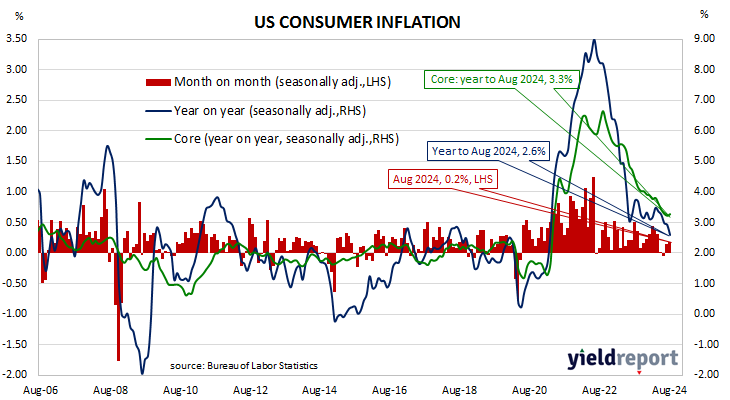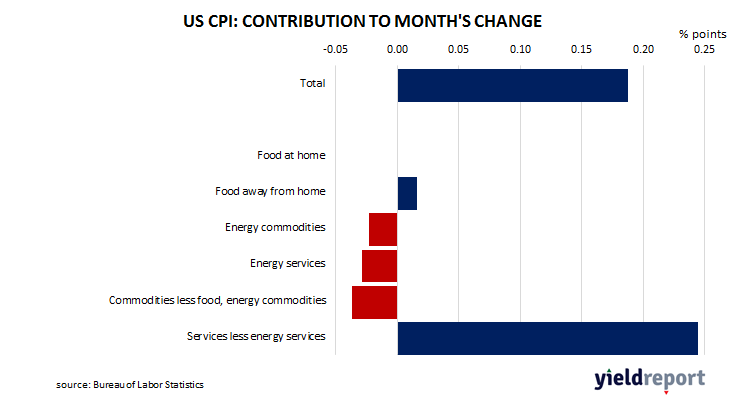Summary: US CPI up 0.2% in August, in line with expectations; annual inflation rate slows from 2.9% to 2.6%; “core” rate up 0.3%, up 3.3% over year; ANZ: data supports view inflation headed to Fed’s 2% target; US Treasury yields generally rise; rate-cut expectations soften, nine cuts still expected; Westpac: core prices increase driven by another robust month for shelter; non-energy services main driver of overall result.
The annual rate of US inflation as measured by changes in the consumer price index (CPI) halved from nearly 3% in the period from July 2018 to February 2019. It then fluctuated in a range from 1.5% to 2.0% through 2019 before rising above 2.0% in the final months of that year. Substantially lower rates were reported from March 2020 to May 2020 and they remained below 2% until March 2021. They then rose significantly before declining from mid-2022.
The latest US CPI figures released by the Bureau of Labor Statistics indicated seasonally-adjusted consumer prices increased by 0.2% on average in August. The rise was in line with expectations as well as July’s increase. On a 12-month basis, the inflation rate slowed from 2.9% to 2.6%.
“Headline” inflation is known to be volatile and so references are often made to “core” inflation for analytical purposes. The core prices index, the index which excludes the more variable food and energy components, increased by 0.3% on a seasonally-adjusted basis over the month, above the 0.2% rise which had been generally expected. The annual growth rate ticked up from July’s rate of 3.2% to 3.3%.
“Shelter and transportation services CPI were sticky, up 0.5% and 0.9% respectively,” said ANZ senior economist Catherine Birch. “The owner equivalent rents and airfares surprised on the upside. It is likely that the rise in these components is a one-off. Broadly, the data supports the view that inflation is headed to the 2% target sustainably.”
US Treasury bond yields generally increased on the day across a flatter curve. By the close of business, the 2-year Treasury yield had gained 4bps to 3.64%, the 10-year yield had added 1bp to 3.65% while the 30-year yield finished steady at 3.97%.
In terms of US Fed policy, expectations of a lower federal funds rate in the next 12 months softened, although at least nine 25bp cuts are still currently factored in. At the close of business, contracts implied the effective federal funds rate would average 5.20% in September, 4.765% in November and 4.51% in December. August 2025 contracts implied 2.93%, 240bps less than the current rate.
“The marginal upside surprise for core prices was the result of another robust month for the shelter component, a 0.5% gain following July’s 0.4% rise,” said Westpac economist Jameson Coombs. “Transportation service inflation also accelerated in the month, from 0.4% to 0.9%, while car price inflation was less of a drag.”
The largest influence on headline results is often the change in fuel prices. Prices of “Energy commodities”, the segment which contains vehicle fuels, decreased by 0.6% and contributed -0.02 percentage points to the total. However, prices of non-energy services, the segment which includes actual and implied rents, again had the largest single effect on the total as they contributed 0.24 percentage points following a 0.4% increase on average.



